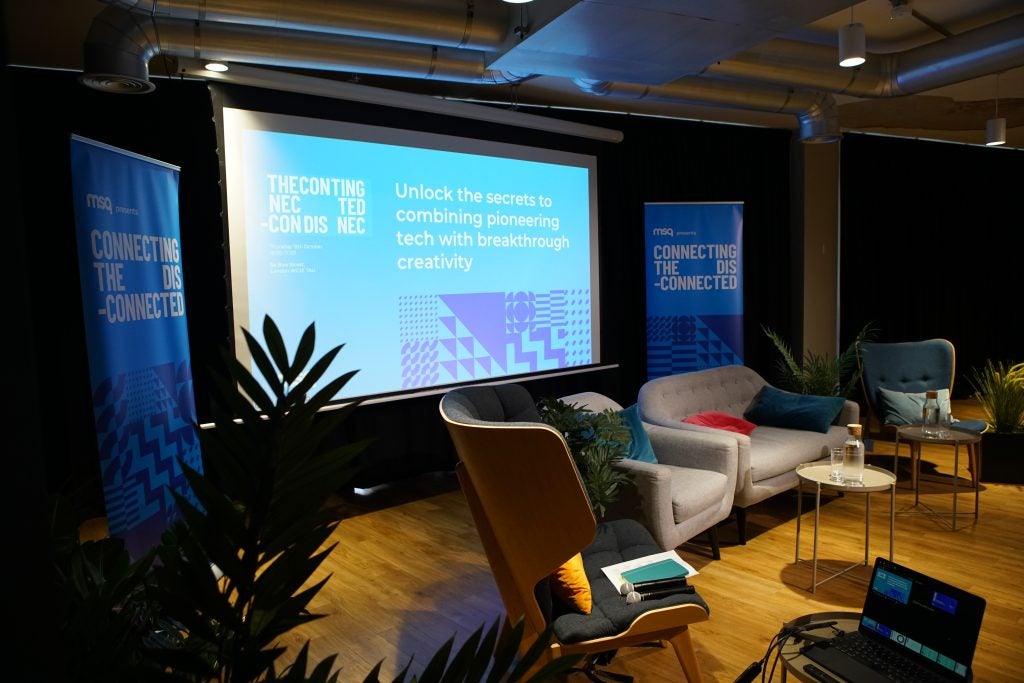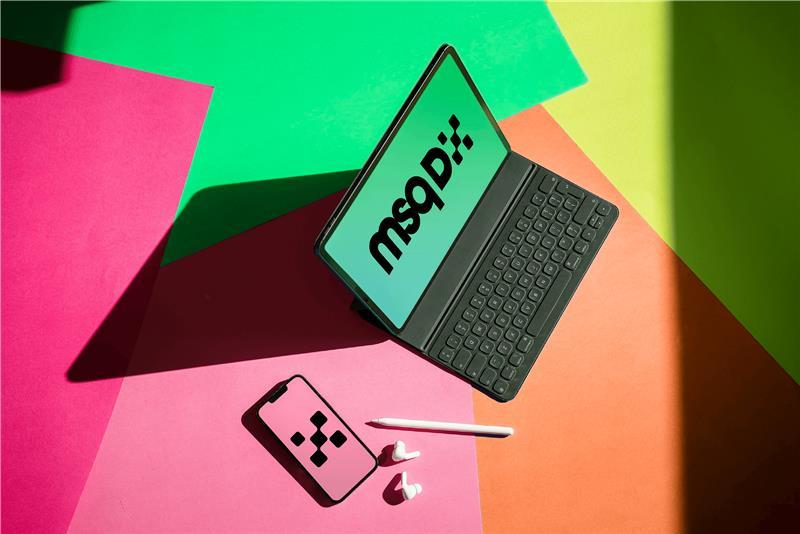 Home Page
Home PageWhen Creativity and Tech Collide: 7 Secrets to Connecting the Disconnected
When we first started our project interviewing 50 of the world’s leading marketers we had a relatively straightforward question. What are the biggest challenges and opportunities you’re facing right now?
We knew we wouldn’t receive straightforward answers.
Indeed, the resulting white paper could have been titled something along the lines of ‘The top 1000 things on every CMO’s mind in 2023’. And we’d have to update it with an extra 250 new challenges for 2024.
But we did spot one underlying thread that seemed to connect a lot of the issues and requirements populating our interviewees’ thoughts. They were all focusing using new muscles and finding value, by making better connections in a newly fragmented ecosystem. Connecting with their customers, their employees. Connecting the tools, services, insights, information and increased data they have at their disposal. Connecting previously, gloriously siloed organisations. And a whole lot more.
Thus, Connecting the Disconnected was born. You can access the full research piece here. And one of the key areas it explores is around combining pioneering tech with breakthrough creativity. How can you ensure distinctiveness and differentiation in an increasingly multi-channel world?
The white paper is a great starting point to answer that question. But we wanted to go deeper. Which is why you’re here now. We asked leaders from four of the UK’s leading brands how they were setting themselves up to ensure they use the power of technology and the magic of creativity to achieve brand growth. It takes organisational change, new cultures, working practices, mindset shifts and the ability to implement new tools and models. But what does that really mean? Having had the pleasure of chairing the panel, here are my key takeaways…
1. Take it to the top…
We talk a lot about marketers and tech leads needing a place at the top table within a business. And when discussing success stories with the panel, they all singled out early stakeholder management as an important lesson they’ve had to learn. Will Harrison, Group Brand Director of The AA, referred to being ‘on a PR treadmill’ when readying for the brand’s new launch. Giving the CEO and Exec team a clear roadmap, building momentum and seeing how the work is baked into the commercial KPIs of the business. Will went as far as bringing the CEO into the pitch process when hiring a new agency last year, so that everyone had agreed on a vision and things could move forward faster.
2. …Then take everyone on the journey
I loved one panellists build on the previous point: “If I turned up and said to my CFO that I didn’t know what a balance sheet is, I’d be fired… yet everyone can have an opinion on marketing without having done any due diligence… why’s it always a one-way thing?” That’s why it’s so important to have everyone understand your brand, your marketing and your efforts in connecting with customers. Have shared KPIs that ‘mean something’ to everyone – not just to build momentum but also to build trust. As another panellist put it: “I always partner with our finance team and our commercial teams to ensure we’re building our models together – because everyone needs to believe what’s going into it, so everyone can believe what’s coming out of it. So many times a marketer goes into a presentation and says ‘we’ve increased this by one per cent’ and nobody believes it, they want to see the evidence… so we make it a ‘we’ thing, not a ‘me’ thing.”
3. Find a shared language
If you’re breaking down walls and working together towards a defined common goal, it’s crucial that you’re all then speaking the same language. One panellist discussed how they made a conscious effort to stop using the word ‘brand’ when talking to technical teams and instead use the word ‘customer’. “We’re not forcing our brand down technical teams’ throats because they switch off, so we talk about speaking to customers, how we’re engaging with customers on a journey.” It’s a subtle difference but that shift brought everyone together. Nuance matters.

4. Start small, move fast
Those nuances like developing shared languages are important because incremental gains can help build momentum. It stops you from trying to do too much too soon. One panellist highlighted such a potential issue for any major digital transformation project: “sometimes these projects get so enormous… yet actually there’s a beauty in keeping things as small as possible for as long as possible. You then don’t have the overheads, don’t have the complications and it means you can try and keep that innovation mindset. If you can disrupt in pockets then you should, and only expose a team to broader scrutiny when the time is right.”
5. Be single-minded about the customer
If you speak to everybody, you speak to nobody. Which becomes problematic when you’re a brand – as all those on our panel were representing – that offers more than one service or product. So, as Very CMO Jess Myers explained, you’ve got to be laser-focused with your communications. “Understand that sweet spot about who you’re talking to, obsess over it and stick true to it. Only then you can look at their wants and dreams and how they consume media and how they interact with their families etc… that’s when you can start becoming highly relevant to them.” Building close relationships is critical for any brand looking to grow, but you can’t just throw a load of ideas out there and hope one sticks.

6. Let a marketer be a marketer (and let a tech specialist be a tech specialist)
To connect the disconnected you need to build great teams. But what does the make-up of a team look like? Casting is key, and our panels’ overriding advice was to free up the experts so they can actually put their expertise to good use. That sounds simple, but we’re in an age where marketers are expected to be a million different things to a million different people. “Every creative is meant to be super data literate and tech capable, and because of that we’re finding a lot fewer innately creative types turning up at our door,” one panellist remarked… “our team needs both creative and tech expertise, but people aren’t always capable of doing both.” Rather than try and get generalists who can do a little bit of everything, create an environment where you have genuine specialists and are able to bring them into the fold at the right time.
7. And yes, there was talk of AI…
Well, we couldn’t gather a room full of the UK’s leading marketers and not have a question about it, could we? And one of the most interesting discussions was around managing teams when AI lurks on the horizon. One panellist admitted that a lot of his team were scared – was it going to take all of their jobs? As a leader, they see their responsibility as helping their teams think of AI as a superpower, not a replacement. It’s a tool that takes away the tedious parts of the job and makes some processes faster, but only to free the team up so that they can do the things that AI can’t do as well. Of course it’s important to have teams exploring AI possibilities, but being clear on the purpose of what the business may be using AI for is key – not just to avoid wasting time but to keep teams motivated and engaged too.
Find out more about Connecting the Disconnected here and download the white paper here. Stay tuned for more detailed content from our most recent panel event and get in touch with Rajet Gamhiouen on rajet.gamhiouen@msqpartners.com if you’d like to join us for more further sessions in the series.
Further reading



